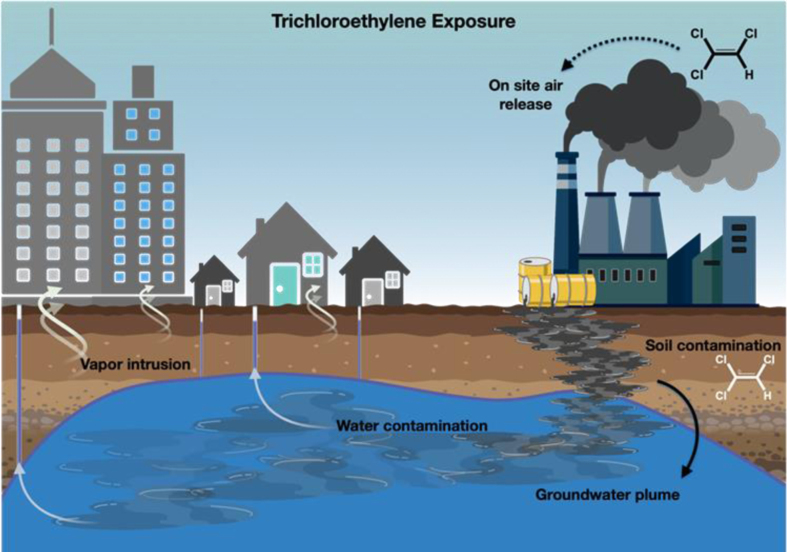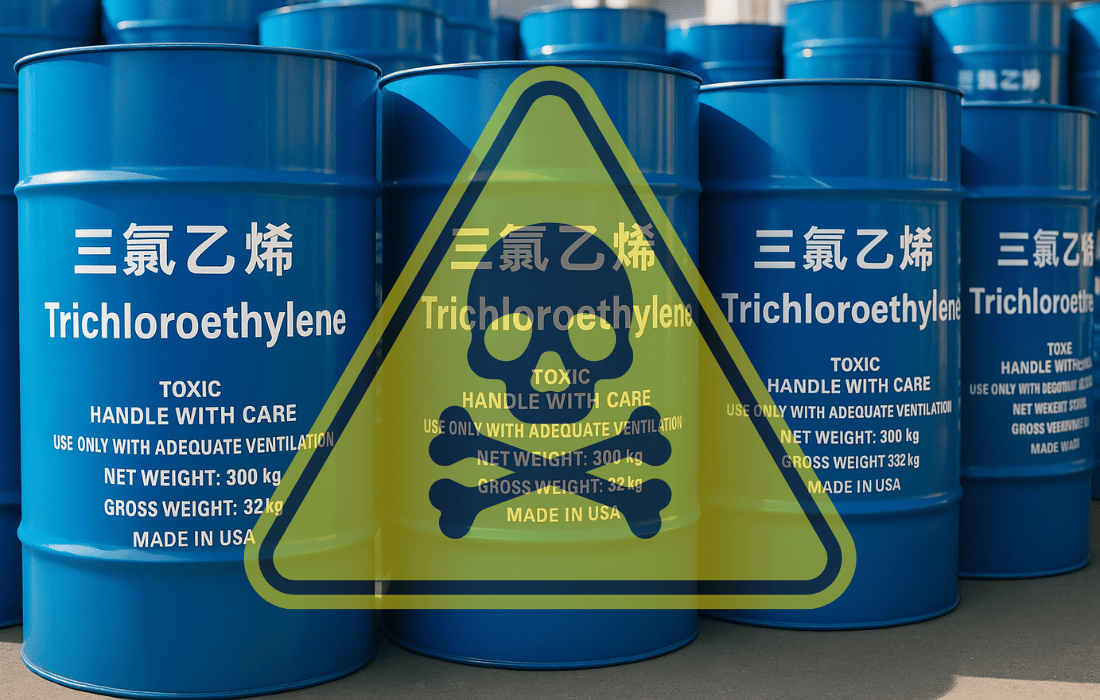If there’s one thing we’ve learned from history, it’s that dangerous chemicals never seem to go away quietly. Trichloroethylene (TCE) is no exception. This industrial solvent, linked to cancer, Parkinson’s disease, and birth defects, was finally banned by the Environmental Protection Agency (EPA) in 2024. But now, thanks to aggressive industry lobbying and a new administration prioritizing deregulation, the ban is at risk of being overturned.
How did we get here? Why is a chemical with such a toxic track record still up for debate? And what does this mean for public health and environmental safety moving forward? Let’s break it down.
What Is Trichloroethylene (TCE) and Why Is It So Dangerous?
Trichloroethylene (TCE) is like that toxic ex you thought you finally got rid of—only to have it reappear, backed by powerful industry lobbyists, demanding another chance to ruin your life. This notorious industrial solvent, used for decades in manufacturing, degreasing, and dry cleaning, has been linked to cancer, Parkinson’s disease, and birth defects. The Environmental Protection Agency (EPA) finally banned it in 2024, but as we all know, regulations that protect human health tend to get bulldozed the moment Big Industry complains about its bottom line.
Now, with corporate lobbying in full swing and a second Trump administration in power, the EPA’s ban is on shaky ground. So, what’s really happening behind the scenes, and why is an obvious carcinogen still a topic of debate? Let’s break it all down.
TCE is a volatile organic compound (VOC) used primarily as an industrial solvent. In the mid-20th century, it was widely employed in degreasing metal parts, manufacturing, and even dry cleaning (because who doesn’t love a fresh press with a side of cancer?).

Unfortunately, studies have long shown that exposure to TCE is linked to serious health issues, including:
1. TCE and Cancer: Carcinogenic Consequences
The Department of Health and Human Services classifies TCE as a known human carcinogen, meaning there is conclusive evidence linking it to cancer development. Research has shown that prolonged exposure to TCE significantly increases the risk of kidney cancer, liver cancer, and non-Hodgkin lymphoma. Workers exposed to TCE in industrial settings and communities with contaminated groundwater have been found to develop these cancers at alarmingly high rates.
Additionally, TCE has been shown to cause DNA damage, disrupting cellular functions that can lead to malignant tumor growth. Some studies also indicate that exposure to TCE may enhance the risk of other types of cancers, such as bladder, prostate, and multiple myeloma.

2. TCE and Neurological Disorders: The Parkinson’s Connection
One of the most alarming discoveries about TCE exposure is its strong link to Parkinson’s disease. Studies have found that exposure to TCE can lead to dopaminergic neuron loss, a hallmark of Parkinson’s. The solvent interferes with mitochondrial function, leading to oxidative stress and neurodegeneration.
High-profile cases, such as the Camp Lejeune contamination scandal, have shown an undeniable correlation between TCE exposure and increased rates of Parkinson’s disease among veterans and civilians alike. Another study suggests that those exposed to TCE are at a 500% higher risk of developing Parkinson’s compared to those who are not.
3. Reproductive and Developmental Toxicity
TCE exposure is particularly devastating for pregnant women and developing fetuses. Studies indicate that prenatal exposure to TCE can lead to severe birth defects, including:
Congenital heart defects (holes in the heart, malformed valves, and other potentially fatal cardiac conditions)
Cleft palate and other craniofacial abnormalities
Brain and nervous system malformations that increase the risk of developmental disabilities
Beyond birth defects, TCE has been shown to increase the risk of miscarriage and stillbirths. Women who live in areas where TCE has contaminated the drinking water are at an increased risk of spontaneous pregnancy loss, a chilling reality that has played out in multiple contaminated sites across the country.
Researchers have also found that TCE exposure caused oxidative damage to sperm proteins and increased lipid peroxidation, suggesting that sperm function is impaired at a cellular level, potentially reducing male fertility.
4. TCE and the Immune System: Widespread Vulnerabilities
TCE doesn’t just target individual organs—it wreaks havoc on the entire immune system. Long-term exposure has been linked to immune dysfunction, increased susceptibility to infections, and autoimmune diseases.
A suppressed immune system means the body struggles to fight off common illnesses, while also increasing the likelihood of developing chronic inflammatory conditions. Some studies suggest that TCE exposure may play a role in triggering autoimmune diseases like lupus and rheumatoid arthritis.
5. TCE in Drinking Water: A Persistent Threat
One of the biggest public health concerns surrounding TCE is its persistence in the environment—particularly in groundwater. TCE has been found in the drinking water of over 17 million Americans, including highly publicized cases such as Camp Lejeune, Woburn, and various military and industrial sites across the country.
Once it contaminates groundwater, TCE is difficult to remove and can linger for decades, continuously exposing local populations. Drinking contaminated water has been directly linked to increased rates of cancer, neurological diseases, reproductive harm, and immune system disorders.
Despite overwhelming evidence of TCE’s dangers, industries that rely on it refuse to let go, claiming it’s too valuable to replace. Their argument? Alternative solvents cost more money. Apparently, corporate profits are still more important than human lives.
The EPA Ban: A Short-Lived Victory?
In December 2024, the EPA officially banned TCE under the Toxic Substances Control Act (TSCA), a long-overdue move after decades of scientific evidence. The ban was supposed to take effect in stages, with an immediate halt on consumer products and a gradual phase-out for industrial applications.
But in January 2025, things took a turn. The Trump administration, siding with industry groups, put the ban on hold, citing concerns about economic impacts on manufacturers. Soon after, Congress introduced resolutions to repeal the ban entirely, and lawsuits from chemical industry lobbyists began flooding the courts.
The EPA itself, now led by former industry lawyer David Fotouhi, requested further delays, raising concerns that the agency was being steered by corporate interests rather than public health data. The delay means that people will continue to be exposed to TCE, despite overwhelming evidence of its dangers.
Corporate Lobbying: The Puppet Masters Behind the Repeal
The chemical industry is no stranger to regulatory battles. Groups like the American Chemistry Council have poured millions into lobbying efforts to prevent the TCE ban from taking full effect. Their key talking points include:
Economic Hardship: Claiming that banning TCE would devastate industries reliant on degreasing solvents.
National Security Concerns: Arguing that TCE is still needed for aerospace and defense applications (despite existing alternatives).
Regulatory Overreach: Suggesting that the Biden administration’s ban was an example of government overreach (because apparently, protecting people from carcinogens is too much to ask).
It’s the same old story: profits over people, corporate influence over science.
The Health Crisis We’re Ignoring
While politicians debate whether corporations should be forced to stop poisoning people, the real victims are everyday Americans who live near contaminated sites or work in industries that use TCE. Some of the worst-affected locations include:
Camp Lejeune, NC: A decades-long contamination crisis linked to TCE in drinking water has resulted in a surge of cancers and neurological diseases among military families.
Woburn, MA: The infamous Woburn leukemia cluster, made famous by the book A Civil Action, was directly tied to TCE pollution in the water supply.
Industrial Sites Nationwide: From aerospace factories to dry cleaning facilities, TCE contamination is widespread, affecting both workers and nearby communities.
Despite these well-documented cases, industry still argues that restrictions are unnecessary.
A Balanced Approach: The Role of RFK Jr. in Educating Trump
Let’s be real—Trump’s decision to roll back the TCE ban isn’t entirely surprising. He’s a businessman at heart, and his administration has always prioritized economic growth, deregulation, and removing what he sees as burdensome restrictions on industries. Given the state of economic uncertainty, especially with supply chain disruptions and inflation, it makes sense that he would want to minimize what he perceives as overreach in regulatory policy.
However, there’s a big difference between cutting excessive regulation and undoing critical health protections. This is where RFK Jr. could play a crucial role in educating Trump on the importance of keeping bans on chemicals like TCE intact. RFK Jr. has spent his career advocating for environmental protections, exposing corporate malfeasance, and championing health-first policies.
Regulation has its place. The problem in recent decades is that it has swung too far in the direction of bureaucratic overreach—stifling businesses with excessive red tape, pushing unnecessary climate regulations, and making it harder for small businesses to compete. That said, throwing out both good and bad regulations in one fell swoop is a reckless approach. What we need is a cautious, methodical, and scientific balancing act—one that removes harmful regulatory overreach while preserving necessary public health protections.
This is where RFK Jr. could step in as a voice of reason, urging Trump and his administration to separate essential regulations (like banning TCE) from unnecessary ones. The key to sustainable policy is recognizing that some rules save lives, while others are unnecessary bureaucratic obstacles. TCE falls firmly in the “this needs to stay banned” category.
What Can We Do?
If history has taught us anything, it’s that regulatory battles are never truly won—the moment public attention shifts, industry swoops in to undo progress. But we don’t have to sit back and watch it happen.
Contact Your Representatives: Tell your senators and representatives that public health should come before industry profits. Demand that they uphold the TCE ban.
Support Organizations Fighting for Clean Water: Groups like the Environmental Working Group (EWG) and the Natural Resources Defense Council (NRDC) are actively working to keep dangerous chemicals out of our environment.
Stay Informed and Spread Awareness: The more people understand the real dangers of TCE, the harder it will be for industry to sweep the issue under the rug.
The Fight Against TCE: Why This Battle Is Far From Over
The fact that we’re still debating whether a chemical linked to cancer, Parkinson’s, and birth defects should be allowed in our environment is a testament to how deeply industry influence runs in regulatory decision-making. TCE is not some mysterious, misunderstood compound—it is a well-documented toxin that has wreaked havoc on countless lives. Yet, because it remains a convenient and profitable solvent for corporations, its fate is being determined not by science, but by lobbyists and political maneuvering.
This isn’t just about TCE. It’s about setting a precedent for how we handle toxic chemicals in our air, water, and workplaces. If we allow industry to roll back this ban, it opens the door for even more deregulation of known carcinogens under the guise of economic protectionism. We’ve seen this play out before, with asbestos, PFAS, and other pollutants that linger in our ecosystems and our bodies long after their supposed ‘benefits’ have faded.
A functional regulatory system should not be a pendulum swinging wildly between total corporate control and excessive bureaucratic red tape. It should be based on scientific evidence, public health priorities, and a responsible approach to economic sustainability. RFK Jr. understands this balance and has the ability to bring these concerns to the forefront of the national conversation.
So, what do we do? We stop treating this as just another regulatory rollback and recognize it for what it is—an attack on public health. We speak up, educate ourselves and others, and put pressure on lawmakers to defend common-sense protections that have taken decades to implement. If we don’t, we’ll find ourselves in the same fight again, just with different chemicals and different names.
TCE has no place in our environment, our drinking water, or our workplaces. The science is clear. Now, it’s up to us to make sure the policies reflect that truth.?
We shouldn’t have to keep fighting to protect ourselves from known poisons. And yet, here we are.














